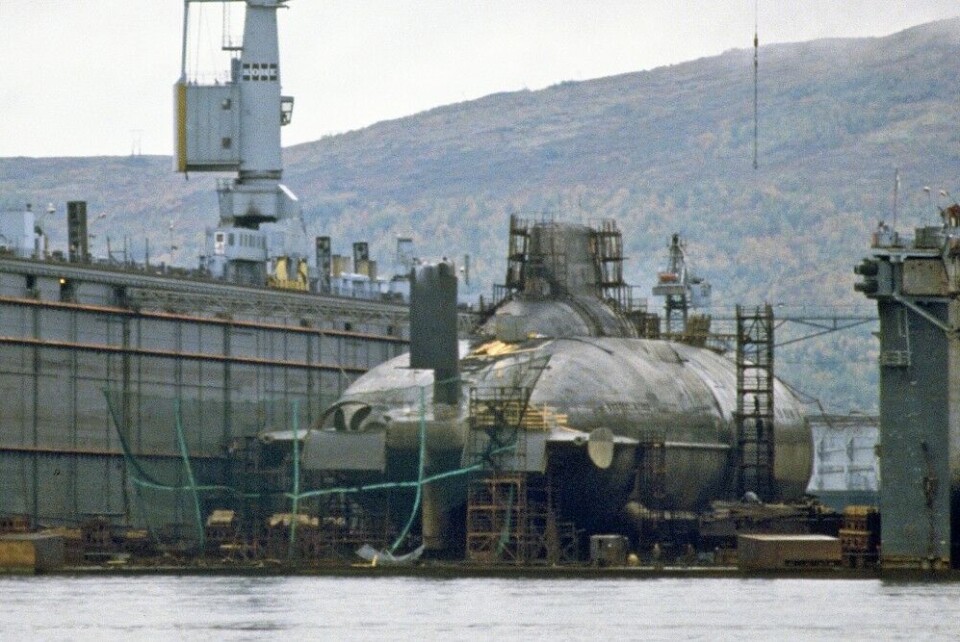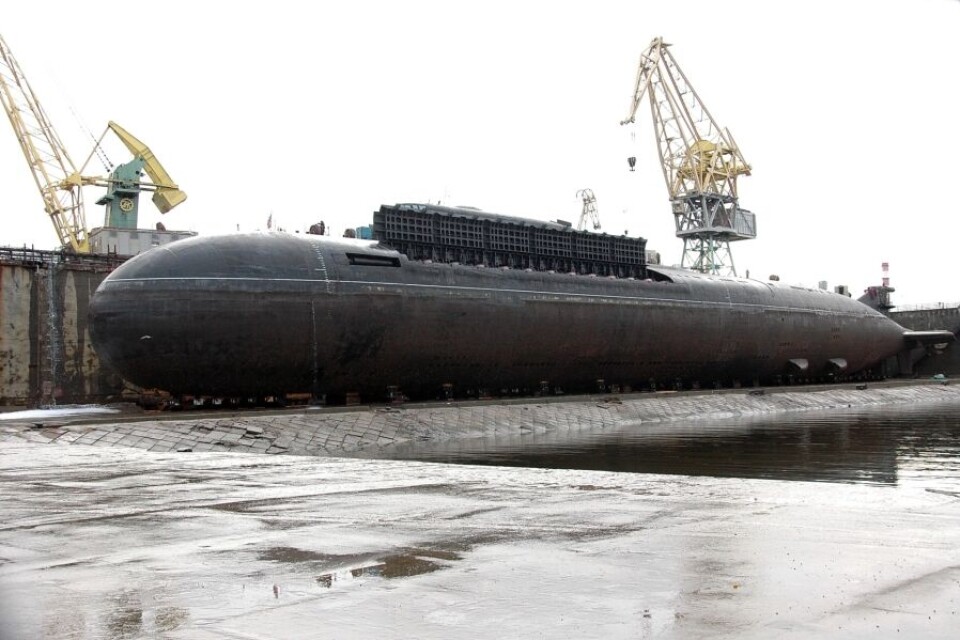
Now, Russia builds a submarine even bigger than the Typhoon
The Northern Fleet's new "Belgorod" research sub for Arctic waters will be world’s largest. To be put on water in Severodvinsk next year.
p.p1 {margin: 0.0px 0.0px 0.0px 0.0px; font: 11.0px Helvetica; color: #000000; -webkit-text-stroke: #000000}p.p2 {margin: 0.0px 0.0px 0.0px 0.0px; font: 11.0px Helvetica; color: #000000; -webkit-text-stroke: #000000; min-height: 13.0px}span.s1 {font-kerning: none}
Russia’s new military research submarine for Arctic waters will be 11 meters longer than the giant Cold War Typhoon class.
The hull is based on an incomplete Oscar-II submarine originally laid down at the Sevmash yard in Severodvinsk back in 1992. Oscar-II class is similar to the «Kursk» submarine that sank in the Barents Sea in August 2000.
«Belgorod» will be equipped to carry special deep-sea diving equipment, including another submarine, and can be used both for military and civilian purposes on the Arctic shelf.
Originally, the hull of an Oscar-II class sub is much wider than most submarines since the cruise missiles are attached alongside. With the missiles removed, it is believed that larger objects for underwater operations can be carried.
Now, sources in the Navy confirms to Izvestia that the submarine has been embedded in size with almost 30 meters. The extra length is added to include special equipment including pressure chambers for divers to exit the vessel at deep sea. Also, unmanned autonomous vehicles, or subsea drones, can be carried.

The submarine’s hull is extended from the 154 meter normal length of an Oscar-II class to 184 meters. That is 11 meters longer than the Typhoon submarines built in the 1980s for the Soviet navy.
Seabed detection network
Izvestia reports that the submarine «will study the bottom of the Russian Arctic shelf, look for minerals, as well as placing out submarine communication systems.» The last could be a new detection network to be located on the seabed under the Arctic icecap with similar functions as NATO’s SOSUS submarine detection network in the North Atlantic.
With a network of subsea sonars and other detection devices, foreign submarine activities can better be monitored.
«The submarine will provide a global deployment of underwater monitoring system, which the military is building at the seafloor of the Arctic Oceans,» Professor at the Academy of Military Science, Vadim Kozyulin, says to Izvestia. He says «Belgorod» will not only be the world’s largest nuclear powered submarine, it will «The most unique submarine of the Russian Navy.»

Russia’s new sensor system was first mentioned in an article in Izvestia last summer.
Spy operations
«Belgorod” is powered by two nuclear reactors. Also, the mini submarine to be attached to «Belgorod» could be nuclear powered, likely one of the mini-submarines developed for special purpose operations, like the «Losharik.»
Over the last decade, the Russian navy has seriously modernized it’s fleet of special purpose submarine, including both mini-subs for spy- and research operations, and larger carriers.
Last Novembver, Sevmash shipyard revealed a unique video of the «Podmoskovye» sailing out to the White Sea. «Podmoskovye» is a rebuilt Delta-IV class submarine aimed to carry mini-submarines also to work on underwater intelligence cables in the Barents and Norwegian Seas, as reported by the Barents Observer.
















